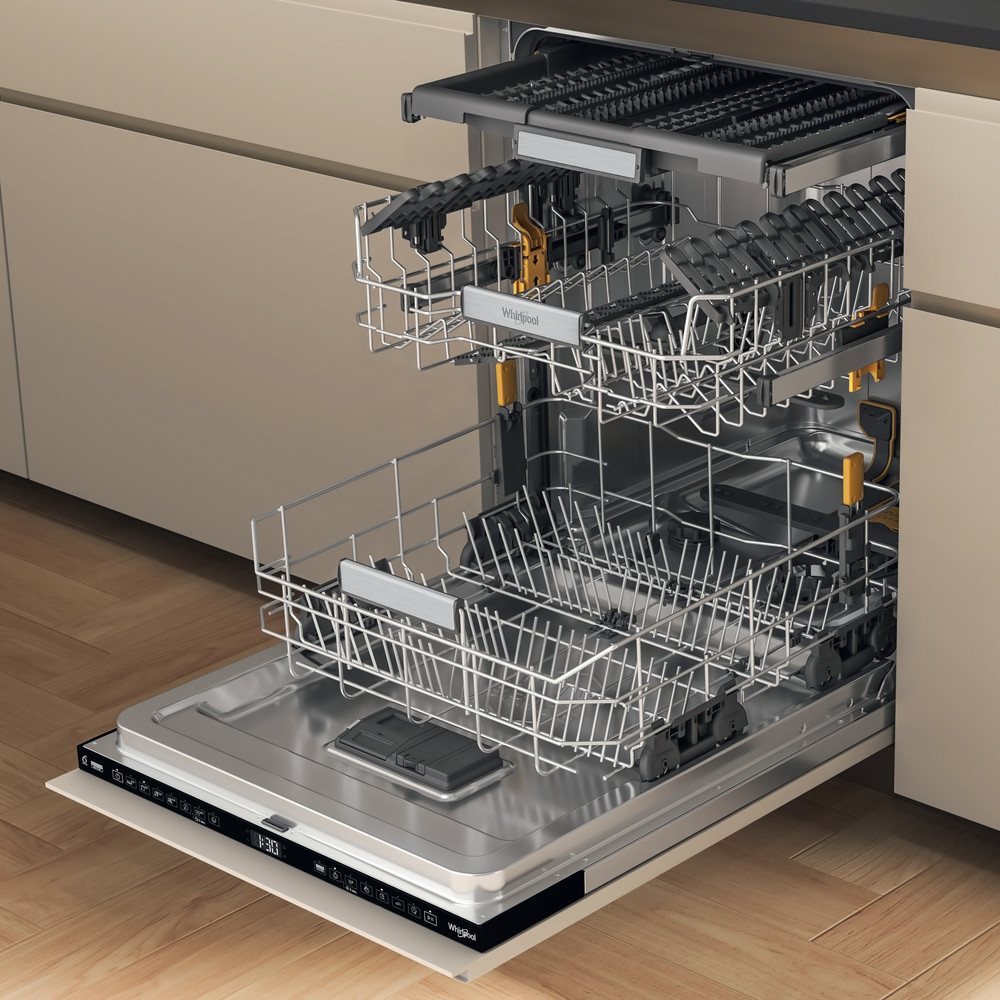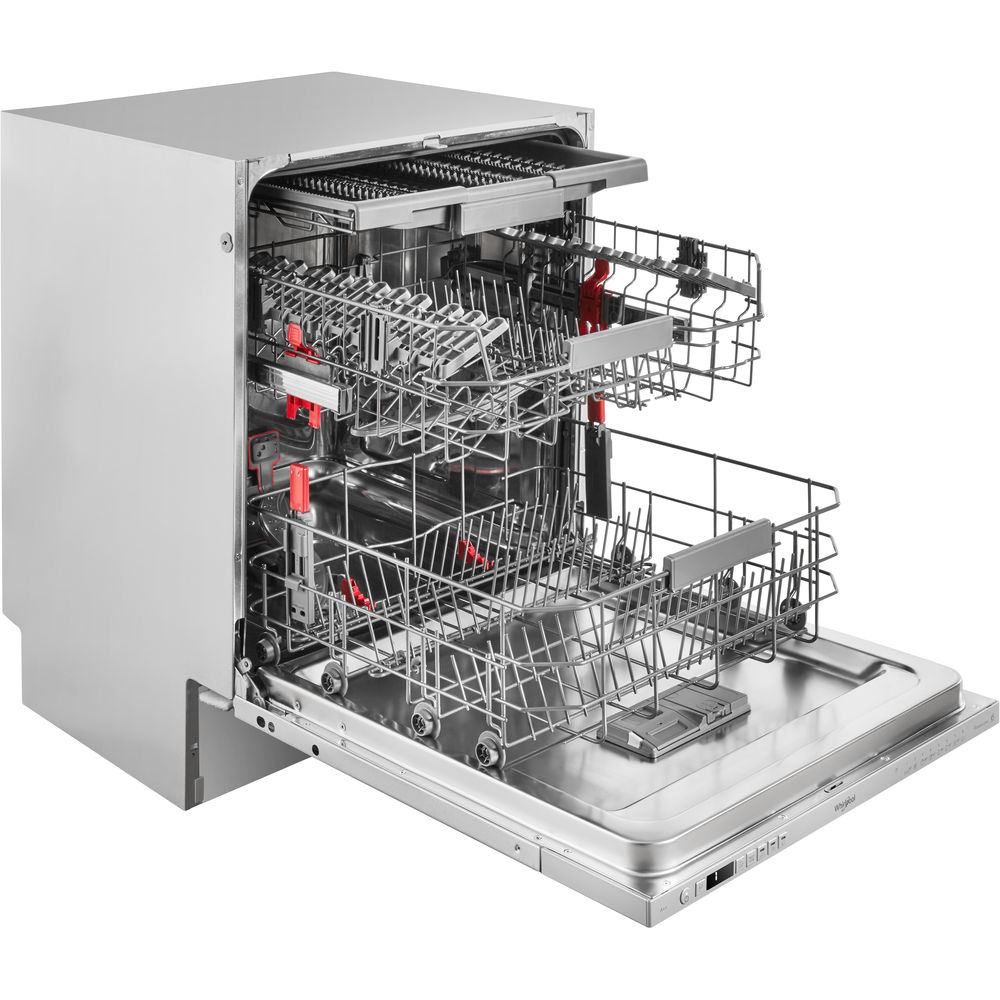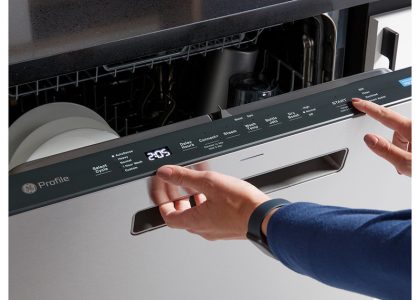Getting Started with Your Whirlpool Dishwasher
Embarking on your journey with a new Whirlpool dishwasher starts with a few simple steps. Ensure you have all you need to begin. This includes the dishwasher, a compatible dishwasher detergent, and dirty dishes. Here’s how to set the stage for a seamless washing experience:
- Read the manual: Every Whirlpool dishwasher comes with a manual. It has valuable information on installation, features, and safety tips. Go through it before your first use.
- Inspect the dishwasher: Check your new appliance for any shipping damage or defects. It’s critical to ensure everything is intact before you start.
- Install properly: If you haven’t done it yet, ensure the installation meets the manufacturer’s guidelines. This could include leveling the dishwasher, connecting it to water and power, and more.
- Load correctly: How you load the dishwasher affects how well it cleans. Place the dirtiest dishes in the center and avoid overcrowding.
- Select a cycle: Your Whirlpool dishwasher has various wash cycles. Choose one that fits the type of dishes and the level of soil.
- Add detergent: Use the recommended amount of detergent. This ensures the best cleaning performance and helps maintain the dishwasher.
- Turn it on: After everything’s in place, press the power button, set your desired cycle, and let your Whirlpool dishwasher work its magic.
Follow these steps for a hassle-free start with your dishwasher. Regular use will make you even more familiar with how to use your Whirlpool dishwasher to its full potential.
Loading the Dishwasher Efficiently
Mastering how to use your Whirlpool dishwasher involves efficient loading practices. Proper loading ensures every dish comes out spotless. It also prevents damage to your dishes and the appliance itself. Here are key steps to load your dishwasher efficiently:
- Organize by size and type: Place larger items on the bottom rack. Keep glasses and more delicate items on the top rack.
- Face the dirtiest side down: Position dishes so the dirtiest side faces the spray nozzles. This gets them cleaner.
- Separate spoons and forks: Mixing cutlery prevents effective cleaning. Separate them in the cutlery basket.
- Avoid nesting: When utensils nest, water can’t clean them well. Spread them out in the cutlery basket.
- Place plastic ware safely: Lightweight plastics go on the top rack to prevent them from warping.
- Check for loose items: Secure loose items so they don’t fall and block the spray arm.
- Don’t obstruct the sprayer: Keep the center clear for the spray arm to rotate freely.
- Do not overcrowd: Leave space between dishes. Crowding can lead to dishes not getting cleaned.
Following these guidelines will help you use your Whirlpool dishwasher efficiently and keep your dishes and dishwasher in top condition. Ensure to revisit these tips for optimal performance every time.
Choosing the Right Detergent and Additives
Choosing the right detergent and additives is crucial for optimal results with your Whirlpool dishwasher. The type of detergent you select can greatly affect cleaning performance and the lifespan of your dishwasher. Here are some recommendations to help you make the best choice:
- Use recommended detergent: Opt for detergents specifically designed for dishwashers. Avoid using hand dishwashing liquid.
- Consider detergent form: Powder, liquid, and tablets are common forms. Tablets often include rinse aids and other benefits.
- Check water hardness: Your water’s hardness can impact detergent choice. Soft water requires less detergent than hard water.
- Rinse aids are helpful: They prevent water spots on glassware and improve drying. Add them to the rinse aid compartment.
- Use a dishwasher cleaner: Regularly use one to keep the internal parts clean and functioning well. It will help maintain the machine.
- Be mindful of quantity: Too much detergent can leave residue, and too little may not clean well. Follow your manual’s suggestions.
By following these tips on how to use Whirlpool dishwasher detergents and additives, you’ll ensure your dishes are pristine after every wash cycle, and your dishwasher remains in good shape for years to come.
Understanding the Wash Cycle Options
To make the most of your Whirlpool dishwasher, understanding the wash cycle options is key. Each cycle serves a specific cleaning need. Here’s a breakdown:
- Normal: This cycle is for everyday dishes. It balances time and energy.
- Heavy: Choose this for pots, pans, and caked-on food. It takes longer but cleans deeper.
- Quick: When you’re in a hurry, this cycle cleans lightly soiled dishes fast.
- Rinse: No detergent needed. It just rinses off the remains before a full wash.
- Eco: Save water and energy with this cycle for normally soiled dishes.
- Glass: This gentle cycle is for delicate glassware to prevent damage.
- Sanitize: Use this for a high-heat wash that kills most bacteria.
Each cycle uses water, detergent, and energy differently. Pick a cycle that matches the dishes’ soil level. For best results, don’t mix heavily and lightly soiled items. Remember to adjust how much detergent you use, based on the cycle chosen. This helps how to use your Whirlpool dishwasher effectively and keeps your dishes sparkling.
Maintenance: Cleaning and Troubleshooting
To keep your Whirlpool dishwasher running smoothly, regular maintenance is essential. Here are the steps and tips to follow for cleaning and troubleshooting your dishwasher:
- Clean the filter: Remove and rinse the dishwasher filter under running water to remove food particles and debris.
- Wipe down the gaskets: Use a damp cloth to clean the door gaskets. This prevents leaks and ensures a tight seal.
- Inspect spray arms: Check the spray arms for clogs. Clear any blocked holes with a toothpick or small brush.
- Regular deep cleaning: Run an empty cycle with a dishwasher cleaner to eliminate build-up.
- Check for error codes: If your Whirlpool dishwasher shows an error code, refer to your manual to understand it and take the right action.
- Unclog the drain: Make sure the dishwasher drain is not obstructed by food particles or debris.
- Check the racks: Look for signs of wear on the racks and repair or replace them as required.
- Ensure proper loading: Incorrectly loaded items can lead to issues. Double-check that the dishes do not block the sprayer.
When facing problems with your Whirlpool dishwasher, quick troubleshooting can often save you time and money on repairs. Keep this guide close for when you need to figure out how to use your Whirlpool dishwasher more effectively and maintain it for years to come.
Energy Saving Tips
Saving energy with your Whirlpool dishwasher not only benefits the environment but can also reduce your utility bills. Here are some straightforward tips to help you use your dishwasher more efficiently:
- Run full loads: Wait until you have a full load before running the dishwasher. This conserves water and energy.
- Use the Eco cycle: Select the Eco wash cycle for less soiled dishes. It uses less water and energy.
- Air dry: If possible, choose the air-dry option instead of heat drying. It may take longer, but it saves energy.
- Avoid pre-rinsing: Skip pre-rinsing dishes before loading them. Modern dishwashers can handle food scraps.
- Check the filter: A clean filter improves efficiency. Clean it regularly to keep your dishwasher working at its best.
- Heat your own water: Ensure your home hot water heater is set at an efficient temperature. This way, the dishwasher doesn’t expend extra energy heating the water.
- Load intelligently: Proper loading means more efficient cleaning and possibly fewer cycles. Follow loading tips for best results.
By implementing these simple energy saving practices, you will know how to use your Whirlpool dishwasher in a way that is not only effective but also more eco-friendly and budget-conscious.
Maximizing Dishwasher Performance With Accessories
To enhance how you use your Whirlpool dishwasher, consider incorporating useful accessories. This not only amps up the performance but can also make your dishwashing process more streamlined and efficient. Here’s how to get the most out of your dishwasher with the right extras:
- Use Cutlery Baskets: These keep your silverware separated during the cycle, ensuring each piece gets thoroughly clean.
- Invest in Dish Racks: Additional racks can provide better organization for different types of dishes, increasing washing capacity.
- Get Glass Holders: Specialized holders protect delicate stemware by keeping them in place during washing.
- Consider Basket Wheels: If your lower basket’s wheels are worn, replacing them helps the basket slide smoothly, making loading and unloading easier.
- Opt for Eco-Friendly Filters: High-quality filters can improve water efficiency and protect your dishes from food particles.
- Use Rinse Aid Dispensers: They release rinse aid evenly during the cycle, which helps to dry dishes quickly and prevent spots.
- Buy Multipurpose Clips: These clips can secure lightweight items like lids and baby bottle parts, preventing them from being tossed around during the cycle.
Remember, adding the right accessories to your Whirlpool dishwasher not only boosts its functionality but also helps in maintaining its longevity. So, invest in these helpful additions and see the difference in how you use your dishwasher.
Common Problems and Solutions
Even the most reliable appliances can sometimes face issues, and Whirlpool dishwashers are no exception. By knowing the common problems and solutions, you’ll be ready to tackle any issues that arise. Here’s a simple guide to help you out:
- Dishes not cleaning properly: Check that you’re loading the dishwasher correctly and using the right detergent and amount. Ensure the spray arms are not blocked.
- Dishwasher won’t start: Verify that it’s plugged in, the door is fully latched, and the power is on. Also, check your home’s circuit breaker.
- Dishwasher not draining: Clean the filter and check the drain hose for clogs. Look for any food particles blocking the drain.
- Leakage from the dishwasher: Make sure you’re not using too much detergent and that the door seals are clean. Check for loose connections.
- Strange noises: Clear out any debris from the dishwasher. If noise persists, parts may be worn and need replacement.
- Dishes come out wet: Use a rinse aid or select the heat drying option. Confirm that items aren’t blocking the vents.
- Bad odors: Run a cycle with a dishwasher cleaner and check for trapped food scraps in the filter or spray arms.
- Error codes displayed: Consult your dishwasher manual for the specific code definition and recommended action.
Being familiar with how to use your Whirlpool dishwasher and knowing how to fix common issues can help you maintain your appliance for a long lifespan. Keep this troubleshooting guide handy for quick references, ensuring your dishwashing routine stays uninterrupted.








